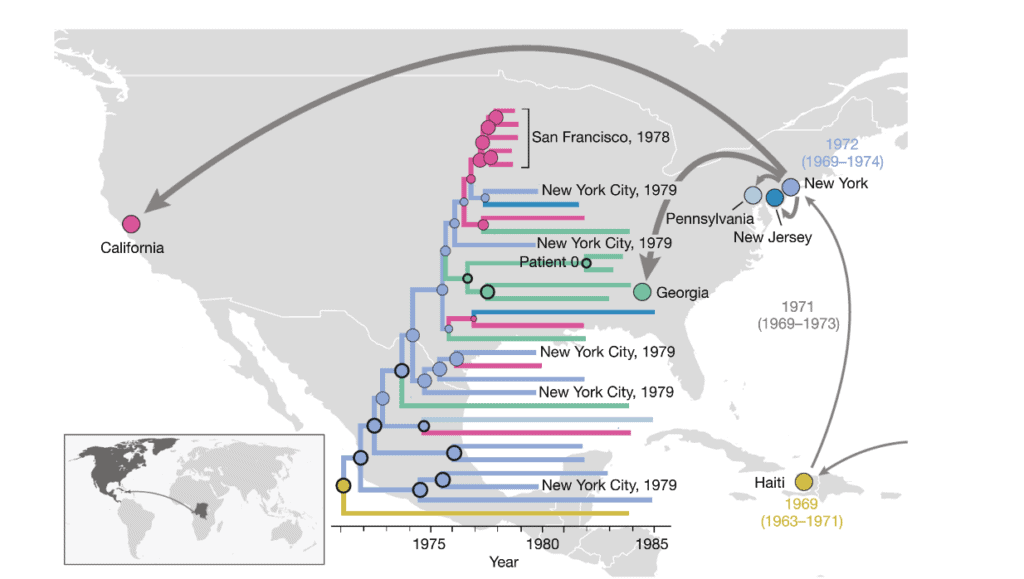In the 1980s, thousands of young men died while doctors and the government scrambled for answers and informed the public of a new killer: AIDS. These were very dark times as panic spread throughout the gay community and far beyond it.
There was a lot of confusion, but also ignorance and lack of support as the virus that caused ‘gay-related immune deficiency’, as doctors called it, swept the nation. But by the time the reality of AIDS was beginning to sink, thousands of people who were already infected would go on to infect others — this was a pandemic that caught everyone with their pants down.
Acquired Immunodeficiency Syndrome is thought to have appeared in the late ’70s and a Canadian flight attendant named Gaetan Dugas was reported to have been the ‘Patient 0’ — the source of AIDS in the United States. For decades, Dugas has been perhaps the most demonized patient in recent history. Now, 24 years after his untimely death, scientists have cleared his name as the first HIV-positive patient in the nation. Mind-bogglingly, all of this unnecessary antagonization was due to a freaking typo. In the medical records, Dugas was classed as Patient ‘O’, not Patient ‘0’ (Zero).
In 1982, doctors began interviewing AIDS patients in an effort to trace relationships and ultimately the origin of the disease. Dugas’ assigned number was actually 057, and the letter ‘O’ signified he was ‘Outside-of-California”, because he was from New York and not Los Angeles, says Richard McKay, a public health historian, and one of the lead authors of a new study.
“One of the dangers of focusing on a single patient zero when discussing the early stages of an epidemic is that we risk obscuring important structural factors that might contribute to its development,” says McKay said in a statement to the press.
McKay and colleagues at the University of Arizona and the University of Cambridge say they not only cleared the name of Dugas, but also made a genetic timeline of the virus that uncovered its true origin.
The team used genetic samples from a study of gay men with Hepatitis B, who were also unknowingly infected with HIV in the late 1970s. Almost four percent of the men were infected with HIV-1 group M subtype B, the most common strain in the country. The HIV genomes were pretty badly damaged but the scientists managed to amplify and recombine them using a technique called ‘RNA jackhammering’.
Starting from the viral DNA of eight patients, the researchers then performed a phylogenetic study, essentially going backward in time based on known mutation rates in RNA and DNA. Results suggest HIV first entered the country in 1970 or 1971. It first landed in New York City from the Carribean, then spread throughout the east coast and later in San Francisco.

The map summarizes the main patterns of spread inferred from the molecular clock phylogeographic analyses. Credit: Nature
The same analysis also revealed that once the virus got to America, it spread like wildfire with the number of infected patients doubling every year.
“Even though the samples come from the late 1970s, an early time point long before anyone noticed AIDS, nevertheless, the samples contain … so much genetic diversity that they could not have arisen from the late 1970s,” says Michael Worobey, the lead author of the study in a press conference Tuesday. “It’s kind of direct evidence of many years of circulation of this virus in the United States before HIV and AIDS were finally recognized.”
The new work highlights why it’s important to put epidemic analyses into a historical context. The techniques the researchers used in their study published in Nature will hopefully prove useful to screen other pandemics in the future.










